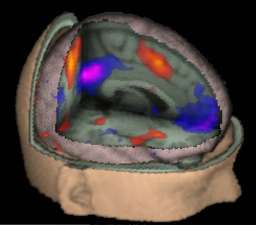Study shows how memory is disrupted in those with disease linked to learning disabilities

(PhysOrg.com) -- Imagine if your brain lost its working memory -- the ability to hold and manipulate information in your mind's eye. That's the plight faced by millions of people with neurofibromatosis type 1, or NF1. The genetic condition affects one in 3,500 people and is the most common cause of learning disabilities.
Now a UCLA research team has uncovered new clues about how NF1 disrupts working memory. Published in the July 12 online edition of Proceedings of the National Academy of Sciences, the findings suggest a potential drug target for correcting NF1-related learning disabilities.
NF1 is caused by mutations in a gene called neurofibromin, or Nf1, which makes a protein with the same name. Previous mouse studies led by principal investigator Dr. Alcino Silva, a professor of neurobiology and psychiatry at the David Geffen School of Medicine at UCLA, showed that the Nf1 protein is essential for controlling the release of a neurotransmitter called GABA, which regulates brain cell activity. Mutated versions of the protein cause too much GABA to be released, dramatically altering communication between brain cells.
In the current study, Silva and colleagues found that mice carrying Nf1 mutations showed higher levels of GABA in the brain region that regulates working memory. The findings imply that excess GABA hinders the activity of neurons in the brain, thus interfering with working memory.
"We focused on a region of the prefrontal cortex that is critical for working memory in mice and compared it to its equivalent region in humans," said study co-author Carrie Bearden, an associate professor of psychiatry at the Semel Institute for Neuroscience and Human Behavior at UCLA. "When NF1 patients performed tasks that required working memory, they displayed reduced activity in the prefrontal cortex. The results were very similar to what we discovered in our mouse model."
The team asked NF1 patients to perform a series of memory tasks while undergoing a functional magnetic resonance imaging (fMRI) scan that measured blood and oxygen flow to various areas of the brain. More blood and oxygen flow indicates greater brain activity. Compared to healthy volunteers, the NF1 patients showed less activity in the part of the prefrontal cortex that controls working memory.
"The NF1 patients' brain cells didn't fully activate in the prefrontal cortex, as in healthy people," Bearden said. "Patients' brain activity levels also predicted their success rate in the experiment. The less activity we saw in this brain region, the worse they performed on the tasks."
"Our research implies that the increased release of GABA interferes with working memory in NF1," said the study's first author, Carrie Shilyansky, a graduate researcher in neurobiology at the David Geffen School of Medicine at UCLA.
The UCLA findings suggest that learning disabilities caused by Nf1 mutations could potentially be corrected with a drug that normalizes the excess GABA's effect on brain cells.
The authors are currently studying the effect of the drug lovastatin on learning and health issues in NF1 patients.
More information: Paper link: www.pnas.org/content/early/201 … /1004829107.full.pdf












